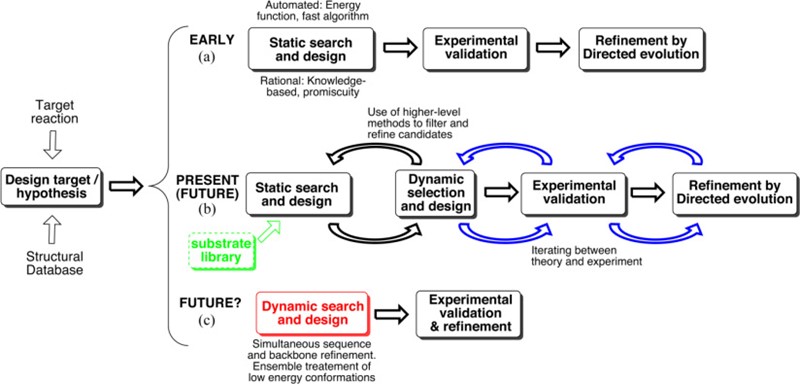Computer-aided rational design (CARD) technology seamlessly integrates computational modeling and experimental techniques, orchestrating the meticulous design and optimization of materials endowed with distinct properties. Rooted in the twin pillars of the structure-function relationship and the prediction-verification iteration, it strategically harnesses computational models to foresee outcomes, validates these prognostications through empirical experiments, and then cyclically hones the models in response to feedback. The evolutionary trajectory of CARD is intricately intertwined with progress in computer science, molecular biology, and engineering. Its application burgeons in realms like novel drug molecule discovery and advanced materials design. Researchers continually weave the threads of machine learning and artificial intelligence into the fabric of CARD, perpetually enhancing its predictive prowess and operational efficiency.
In the realm of enzyme development, CARD stands as a revolutionary force, reshaping the landscape by amplifying comprehension, manipulation, and creation of enzymes. Employing mathematical modeling and simulations, it navigates the intricate nuances of biochemical reactions and workflows, ushering in a more targeted and efficient era in enzyme design. This technology not only facilitates the rational tweaking of existing enzymes but also envisions the potential ramifications of molecular modifications, aiding in the birth of novel biocatalysts. Through meticulous data analysis and forecasting, CARD truncates the arduous and expensive path of experimental testing. It acts as a compass in enzyme engineering, discerning the most promising routes for catalytic enhancement, stability augmentation, and substrate specificity with surgical precision.
 Fig. 1 Experimental protein engineering strategies and idealized schemes for design-test-build-learn cycles using computational optimization of enzymes. (Scherer M, et al., 2021)
Fig. 1 Experimental protein engineering strategies and idealized schemes for design-test-build-learn cycles using computational optimization of enzymes. (Scherer M, et al., 2021)

































 Fig. 1 Experimental protein engineering strategies and idealized schemes for design-test-build-learn cycles using computational optimization of enzymes. (Scherer M, et al., 2021)
Fig. 1 Experimental protein engineering strategies and idealized schemes for design-test-build-learn cycles using computational optimization of enzymes. (Scherer M, et al., 2021)